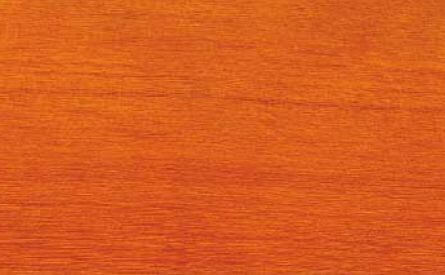BOARWOOD
Leche Verde / Symphonia globulifera

Local Names
Manil, Marchare, Ossol, Chewstick, Varillo, Azufre, Cerillo, Paramán, Mataki, Anany, Brea-caspi
Source & Tree
Boarwood is native to parts of the Caribbean and across Central America and northern South America. It also occurs in tropical West Africa. The species is found in high concentrations and good growth in swamp and marsh areas. Frequently 30 meters in height with trunk diameters of 50-75 cm. The trunks can develop stilt roots for additional anchorage in swampy terrain.
Wood Appearance
Its heartwood varies from yellowish to greenish-brown often with stripes distinct from the whitish sapwood. Its luster somewhat medium and variable, its texture coarse with a straight to irregular grain.
Processing Properties
It’s very easy to work with both hand and machine tools, but surfaces tend to roughen in planing and shaping. Pre-boring is recommended. Silica reported to range up to 0.21%.
Strength & Durability
Boarwood falls between the weight and hardness to northern red oak and white oak and has been suggested as a substitute. The heartwood is durable in ground contact with moderate resistance to dry-wood borers and subterranean termites. It can be employed in areas with dampness with appropriate treatment. While poorly permeable, it can be treated with oily preservative products.
Wood Uses
Railroad crossties, general construction, wood frame and heavy carpentry, furniture components, flooring and interior paneling, cooperage, and veneer for plywood.
Non-Timber Uses
The bark contains yellowish resin that is medicinal, used to caulk boats, as a shoemaker’s pitch and to fuel torches.
| Reference Species | ||||
| Technical Characteristics | Leche Verde | White Oak | Black Maple | |
| Density | kg/m3 | 730 | 750 | 640 |
| Janka Hardness | kgf | 579 | 612 | 535 |
| Bending Stiffness (Modulus of Elasticity) | GPa | 13.0 | 12.2 | 11.2 |
| Bending Strength (Modulus of Rupture) | MPa | 135.0 | 102.3 | 91.7 |
| Crushing Strength | MPa | 59.0 | 50.8 | 46.1 |
| Shrinkage, Radial | % | 4.8% | 5.6% | 4.8% |
| Shrinkage, Tangential | % | 9.6% | 10.5% | 9.3% |
| Shrinkage, Volumetric | % | NA | 16.3% | 14.0% |
| T/R Ratio | 2.0 | 1.9 | 1.9 | |
| Values determined at 12% humidity | ||||
|---|---|---|---|---|
DENSITY
JANKA HARDNESS
BENDING STIFFNESS
BENDING STRENGTH
CRUSHING STRENGTH
SHRINKAGE
Values are for reference only and cannot be guaranteed. Wood is a natural material and physical and mechanical properties may vary depending on age, genetics, and other factors. We encourage customers to consult the references provided in the bibliography. For further explanations of wood’s key technical characteristics, an excellent resource is the Wood Database with articles on Density (average dried weight); Janka hardness; Elastic Modulus; Rupture Modulus; Crushing Strength; Radial, Tangential and Volumetric Shrinkage.






